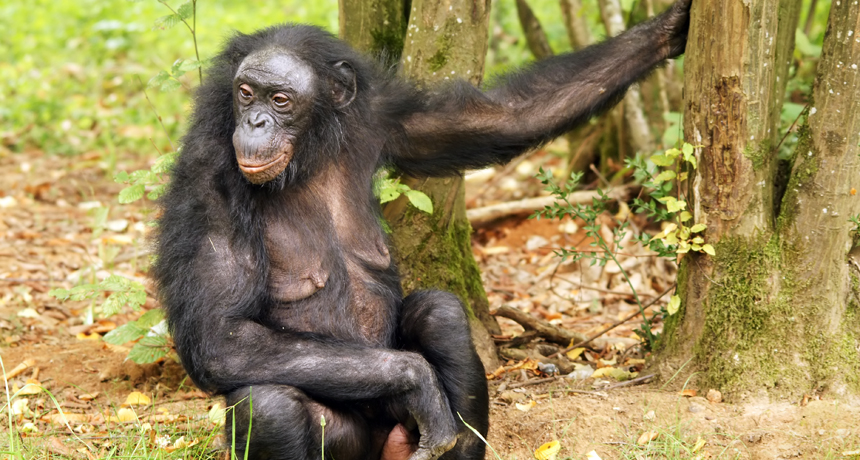Bonobos feel the beat
Studying these animals may tell us whether musical rhythm is widespread

IN SYNC A bonobo, Pan paniscus, belongs to a species than can beat to a human drum.
Hans Hillewaert/Wikimedia Commons
Studying these animals may tell us whether musical rhythm is widespread

IN SYNC A bonobo, Pan paniscus, belongs to a species than can beat to a human drum.
Hans Hillewaert/Wikimedia Commons